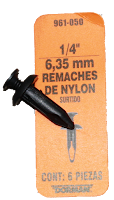My $500 car experience echoes my 15K house experience. Small tasks mushroom into multi-day projects as stuff just falls apart or has been mis-handled so that proceeding requires fixing a few additional things along the way. This makes any job unpredictable in terms of expense or time, as my CVT fluid change has shown.
This is the last installment of changing the CVT fluid, after a number of problems, I was able to get this done as well as replace the high-pressure filter. The biggest fly in the ointment: a broken transmission cooling tube. As the photos clearly illustrate, the thick coat oil and road grime evidences a leak, somewhere, just not sure where, yet. When replacing the water pump, I found what looked to be a leaking camshaft seal, having replaced that, let's hope the remaining oil leaks can be handled through a quart between oil changes.
I'll Be Your New Transmission Cooling Line
 |
| New hose |
Removing the old line
 |
| Line looks to be leaking |
Note the circled part, from where the metal line meets the metal hose, there's a large amount of oil and dirt accumulation. Maybe this is the source of the leaking in this part of the engine? I hope so.
Install New Line
 |
| Where the trouble began... |
Refilling the Transmission
 |
| Measuring old fluid |
 |
| New fluid looks just a bit cleaner |
Square Drive, Imperial Measurement and ISO 1174
The transmission filler plug has a square 3/8 head. This is the same size as the drive head on a socket and, for a car with metric fasteners, decidedly out of place. Why not metric? This transmission, a ZF design, hails right from the heartland of metricness, so why pick something imperial-sized? This caused me to realize that no matter what the fastener type, the interface to the tool applying the force is complements of the Crown. Torx, Metric, English, TP3, ZXN? No matter what, these fasteners attach to to an 1/4, 3/8 or 1/2 inch square drive head on your ratchet. Why not 5mm, 10mm and 15mm interfaces to the sockets? The world has moved on to metric, except, it seems, for square socket drives. Or has it?Somebody should know about drive socket sizing. I contacted the Hand Tools Institute asking the the question, why are the drive sizes still imperial. The answer, yes people actually reply to my emails, was that they're metric, just "soft conversions" from imperial measurements and that all this can be found in ISO 1174-1 for hand-driven sockets or ISO 1174-2 for power driven sockets. What we really have are 6.35, 9.53 and 12.7 square drive sockets conveniently labeled as 1/4, 3/8 and 1/2 inch. That means the 3/8in square drive for the transmission refill plug is really a 9.53mm sized square drive, labeled as 3/8in for convenience.
I was curious about the term "soft conversion" and doing a little more reading revealed that there's actually three types of conversion methods: hard, soft and adaptive. A hard conversion means changing the measurement when converting, for example a 1/4 inch fitting would be specified as a 10mm fitting. Adaptive means the measurements are approximations of each other, in this case a 1/4 inch fitting would be converted to a 9.5mm fitting. So, while "soft" conversion is least precise sounding, that's the opposite in practice.
All Done
 |
| After rust removal and a bit of paint |
In the process of removing the inner fender, I broke the many of the plastic rivets holding it in place. I stopped down at my local auto parts store and found a pack of replacements for a few bucks. With these, I was able to re-secure the plastic inner fender and I was done. If I think I'll be doing more work on the car, I'll probably figure out how to order a bunch of these from Amazon, as I think I ended-up paying about $.25 for each and from the looks of the part, the markup was 10x. There's no reason why I couldn't get a bag of 50 on-line for just a few bucks more than I paid for six at a my local store.

Thanks,
ReplyDeleteI saved a lot of time and money from your tale. Every bit helps!